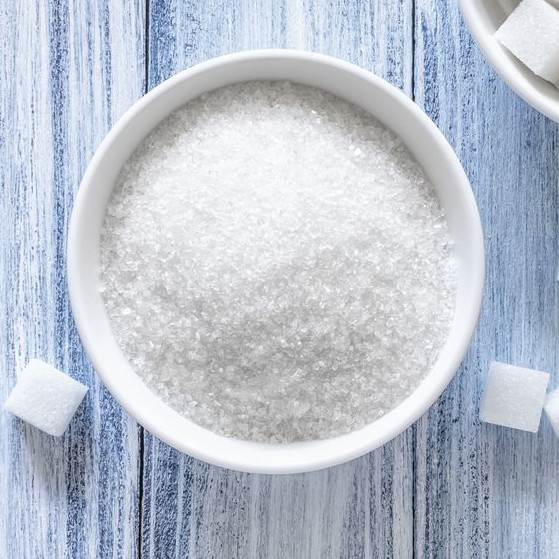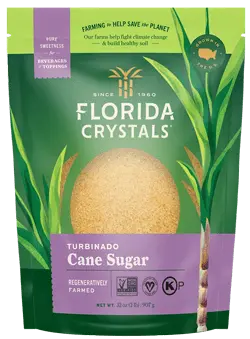Checking Out the Comprehensive Steps Associated With Walking Stick Sugar Processing From Collecting to Improvement
The process of walking cane sugar production encompasses a collection of complex actions, beginning with the cautious harvesting of sugarcane and finishing in the refinement phases that guarantee the last item meets sector criteria. Each phase, from the removal of juice to the filtration and crystallization procedures, plays an essential role in identifying the top quality and character of the sugar.
Collecting Sugarcane
Harvesting sugarcane is a critical step in the walking cane sugar processing chain, as it directly affects the top quality and return of the end product. Proper timing and strategies are essential during this stage to make certain optimal sugar content and lessen losses. Normally, sugarcane is collected when it reaches maturation, normally 12 to 18 months after planting, identified by a high sucrose focus.

Post-harvest, the sugarcane has to be processed swiftly to stop sucrose destruction. Ideally, collected walking stick should be transported to refining facilities within 1 day to maintain sugar quality. Therefore, efficient logistical preparation is essential to maintain the stability of the collected crop throughout the supply chain.
Extraction Process

The crushed walking stick undergoes a collection of pressing procedures to maximize juice recuperation. Typically, warm water is splashed onto the crushed walking cane, producing a countercurrent flow that helps liquify the sugar while also assisting in the extraction process. The juice collected from this procedure contains not just sugar yet additionally various natural substances and contaminations.

To improve extraction effectiveness, some facilities may utilize diffusion methods, where the sugarcane is taken in warm water, permitting the soluble sugars to diffuse into the fluid. The resulting juice, abundant in sucrose, is then guided to succeeding processing phases, laying the structure for filtration and improvement. The removal process is thus pivotal in identifying the top quality and return of the last sugar product.
Purification Techniques
The purification techniques employed in walking stick sugar processing are essential for transforming the raw juice into a top notch sugar product. These techniques largely aim to remove contaminations, such as dirt, plant products, and inorganic materials, which can adversely impact the end product's flavor and color.
One of the most common purification techniques is information. This process includes adding lime and warm to the raw juice, which assists in the coagulation of pollutants. The resulting precipitate is after that eliminated with sedimentation or filtration, yielding a more clear juice. Furthermore, using phosphoric acid can boost the explanation procedure by more binding pollutants.
One more significant method is carbonatation, where carbon dioxide is presented to the made clear juice. This response generates calcium carbonate, which records continuing to be pollutants and advertises their elimination.
In addition, turned on carbon treatment may be used to adsorb any staying colorants and organic impurities, ensuring an extra refined product. The combination of these methods properly prepares the sugar juice for subsequent steps in the refining process, setting the phase for the production of high-grade cane sugar.
Crystallization Techniques
After the purification stage, the next vital action in walking stick sugar handling includes condensation approaches, which play an essential function in transforming the made clear juice right into strong sugar. This process usually employs two key methods: spontaneous crystallization and controlled formation.
In spontaneous crystallization, supersaturated sugar solutions are allowed to cool down normally, bring about the development of sugar crystals in time. This technique is simpler however may result in uneven crystal dimensions and reduced pureness degrees. On the other hand, regulated condensation is an extra specific technique where focus, seeding, and temperature level agents are diligently managed. This approach permits the consistent growth of sugar crystals and greater pureness.
Throughout crystallization, the cleared up juice is focused through evaporation, raising its sugar web content till it reaches supersaturation. Once this factor is achieved, either method can help with the formation process. Cane Sugar Processing. The resultant sugar crystals are then divided from the staying syrup via centrifugation
Inevitably, the option of formation method impacts the top quality, dimension, and purity of the last sugar product, making this step imp source crucial in the total walking stick sugar handling procedure.
Improvement and Product Packaging
How can the purity and quality of walking stick sugar be further enhanced after formation? The improvement procedure plays an important role in attaining premium walking cane sugar. Complying with condensation, sugar undertakes a comprehensive washing to get rid of impurities and recurring molasses. This is commonly completed using warm water or vapor, which aids liquify and draw out unwanted elements while maintaining the sugar crystals.
Following, the sugar goes through a process called centrifugation, where it is rotated at broadband to divide the cleansed sugar crystals from the remaining fluid. After centrifugation, the sugar is commonly further fine-tuned via an approach called carbonization this article or phosphatation, which uses activated carbon or phosphoric acid to eliminate color and off-flavors.
As soon as refined, the sugar is dried out to achieve the desired dampness material, making sure that it remains secure during storage space and transportation. The final step entails product packaging the refined sugar in airtight and moisture-proof containers to preserve its top quality and protect against contamination. Cane Sugar Processing. Appropriate product packaging not only prolongs rack life but additionally helps with easy handling and distribution, ensuring that customers get sugar that meets the highest possible standards of purity and quality
Verdict
The detailed steps associated with walking cane sugar handling, from the careful harvesting of sugarcane to the detailed improvement and product packaging stages, highlight the value of each phase in ensuring premium sugar production. Optimal harvesting techniques, reliable extraction methods, and extensive filtration procedures collectively contribute to the end product's purity and security. The crystallization and subsequent product packaging techniques better improve the honesty and rack life of the sugar, highlighting the complexity and accuracy intrinsic in this essential agricultural sector.
The procedure of walking cane sugar manufacturing incorporates a collection of elaborate actions, beginning with the careful harvesting of sugarcane and finishing in the refinement phases that make certain the final product fulfills market visit standards. Preferably, gathered walking stick should be transferred to refining facilities within 24 hours to preserve sugar quality.In spontaneous formation, supersaturated sugar options are allowed to cool down naturally, leading to the development of sugar crystals over time - Cane Sugar Processing. The refinement process plays an important role in achieving premium cane sugar.The detailed steps involved in walking stick sugar handling, from the precise harvesting of sugarcane to the detailed refinement and product packaging stages, underscore the value of each stage in making sure high-quality sugar production